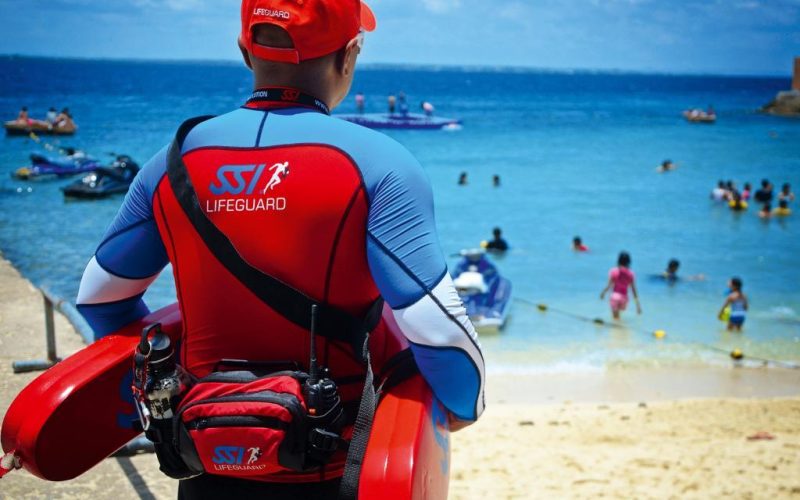Introduction
Becoming a lifeguard is more than just sitting on a high chair by the pool. It’s a career that demands responsibility, vigilance, physical fitness, and strong decision-making skills. Whether you’re a student looking for a summer job or planning a long-term profession in aquatic safety, this guide offers a complete roadmap to take you from a beginner to a seasoned lifeguard professional.
From Beginner to Pro: The Complete Lifeguard Career Roadmap
1. Understand the Role of a Lifeguard
Before diving in, it’s essential to understand what lifeguards actually do.
- Safety Surveillance: Lifeguards are responsible for monitoring water environments to prevent drowning and other injuries.
- Emergency Response: They must react quickly to emergencies and provide first aid or CPR when necessary.
- Public Interaction: Lifeguards often enforce rules, answer questions, and help patrons feel safe.
This career requires mental alertness, physical readiness, and a calm, authoritative presence.
2. Meet the Basic Requirements
Each country or region may have slightly different criteria, but the common minimum requirements typically include:
- Being at least 15–16 years old.
- Passing a swimming pre-test (usually includes swimming a certain distance, treading water, and retrieving a brick from the pool bottom).
- Good physical health and stamina.
- Strong communication and observational skills.
Meeting these standards ensures you’re physically and mentally ready for lifeguard training.
3. Complete Lifeguard Training and Certification
Once eligibility is confirmed, the next step is formal training. This involves:
- Water Rescue Techniques: Learning how to approach and rescue distressed swimmers.
- CPR and First Aid: Essential life-saving skills for adults, children, and infants.
- AED Use: Training on how to operate an automated external defibrillator.
- Legal Responsibilities: Understanding duty of care, negligence, and liability.
Most programs also include both written and practical exams to ensure candidates are well-prepared.
4. Gain Experience Through Entry-Level Jobs
Start by applying for part-time or seasonal positions at local pools, water parks, or beaches. This will help you:
- Build real-world experience in surveillance and rescue.
- Understand crowd dynamics and risk assessment.
- Learn teamwork and communication in high-pressure situations.
Hands-on experience is crucial in developing confidence and competence as a lifeguard.
5. Pursue Specializations and Advanced Training
Once you’ve gained initial experience, you can pursue specializations to grow your career further:
- Open Water Lifeguarding: Training for lakes, rivers, and oceans.
- Shallow Water Lifeguarding: Focuses on pools or water bodies less than 5 feet deep.
- Waterpark Lifeguarding: Involves managing crowds and unique features like slides or wave pools.
- Lifeguard Instructor Certification: Teach and certify new lifeguards.
- Emergency Medical Response (EMR): Advanced care training beyond basic first aid.
These certifications can help you qualify for more advanced roles and higher pay.
6. Maintain and Renew Certifications
Lifeguard certifications typically expire every 1–3 years. It is critical to stay updated:
- Attend recertification courses regularly.
- Practice rescue and CPR skills consistently.
- Keep up with new safety protocols and equipment.
Regular renewal ensures that your skills remain sharp and relevant in the field.
7. Focus on Physical Fitness and Mental Readiness
Being a lifeguard requires maintaining a high level of physical and mental fitness:
- Cardiovascular Endurance: Essential for swimming and quick responses.
- Strength Training: Helps in performing rescues and handling equipment.
- Situational Awareness: Mental agility to assess risks and respond swiftly.
- Stress Management: Stay calm under pressure, especially in emergencies.
Make fitness a regular part of your routine to ensure readiness at all times.
8. Develop Strong Soft Skills
Beyond physical and technical skills, soft skills are vital in progressing as a professional lifeguard:
- Communication: Clearly explain rules and instructions to patrons.
- Leadership: Take charge during emergencies and coordinate with teams.
- Problem-Solving: Think quickly and make sound decisions.
- Empathy and Patience: Deal with the public, especially children or distressed individuals, with care.
These skills not only improve daily performance but are key for leadership roles.
9. Advance to Supervisory or Management Roles
With experience and dedication, lifeguards can move into higher positions such as:
- Head Lifeguard or Team Leader: Oversee a group of lifeguards, schedules, and training.
- Aquatic Facility Supervisor: Manage day-to-day operations at pools or aquatic centers.
- Aquatic Safety Officer: Enforce safety policies and investigate incidents.
- Program Director or Trainer: Design training programs and lead certifications.
Leadership roles come with increased responsibility, the opportunity to mentor others, and enhanced career satisfaction.
10. Consider Lifeguarding as a Stepping Stone
Lifeguarding can also be a gateway to other careers in health, fitness, and emergency services:
- Firefighter or EMT: Builds on emergency response training.
- Swim Instructor or Coach: Leverage aquatic experience into teaching.
- Recreation Management: Oversee community pools and programs.
- Occupational Safety: Apply risk management skills to corporate or industrial environments.
The skills gained in lifeguarding—discipline, leadership, health and safety awareness—translate well into various professions.
Final Thoughts
The journey from a beginner to a professional lifeguard is a rewarding one. It requires dedication, continuous learning, and a genuine passion for safety and service. By following this roadmap—starting with foundational skills, gaining experience, pursuing advanced training, and aiming for leadership—you can build a successful and fulfilling career in lifeguarding.
Whether you’re just testing the waters or ready to dive into a lifelong profession, this path offers personal growth, skill development, and the chance to make a real difference in the lives of others. Stay trained. Stay alert. Stay professional. Your role saves lives.












